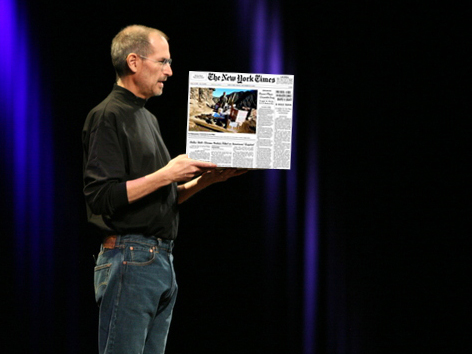
Apple's iPhone has inspired a flood of next generation smartphones
It’s almost, as Yogi Bera would say, “deja vu all over again”. 7 years ago, after Apple first introduced the iPod, there was a rush of “iPod-killers” that flooded the market in order to compete. However, few of these devices ever caught-on long enough to realize any real commercial success and mount a serious challenge to the dominance of the iPod.
This time around, with the mobile market, Apple is something of a late entrant with its iPhone. In 2001, MP3 technology was still relatively new and no MP3 manufacturer had yet created a device — or desktop music management software — capable of establishing it in a dominent position. Not so with the mobile phone market. Last summer, when Apple first introduced the iPhone, it immediately faced stiff competition against entrenched and established manufacturers such as Motorola, Samsung, Sony Ericsson and Nokia.
That said, since the iPhone was released in July 2007, it has enjoyed a remarkable climb in market share, skyrocketing from 4% at the time of its debut to 23% to date. It therefore comes as no surprise that, once again, the popularity of Apple’s device has spawned numerous immitators from RIM/Blackberry’s Storm to LG’s Voyager.
While I don’t see an iPhone-killer in any of them, despite being a faithful iPhone user, I’m rooting for the imitators to do a better job of giving Apple a run for its money than the so-called iPod-killers did. Why? For the simple reason that a good, healthy competition will only end up quickening the pace of innovation and lowering the prices of the resulting products. Both not only good for consumers but also good for the future of mobile computing, which is the next, fastest-growing frontier in the digital space.

Graph courtesy of ChangeWave
Of course, given the sad history of the manufacturers chasing Apple, I’m afraid I don’t have reason to be optimistic. And I’m ALWAYS optimistic! It’s tough for me to realistically expect a rapid pace of innovation to come from the same companies that, prior to the introduction of the iPhone, developed some of the most useless, unimaginative and uninteresting devices on the planet. That last bit is not hyperbole either. For years the United States mobile market has lagged significantly, and embarassingly, behind its European and Asian counterparts. I find it interesting that now that a popular competitor has entered the space, each of them has found a way to incorporate features that had been unheard of before, such as touchscreens and real web browsers.
And why are they content with merely immitating the iPhone rather than developing something truly unique, user-friendly and useful? If they are all content with merely copying and coming in second to the iPhone, it’s unlikely they’ll all of the sudden start truly innovating.
The digital future is at stake
Why is all this important? Why do I care if the others in the mobile market give Apple a run for its money, rather than watch it route the industry as it did with the iPod? Because this time the future of the Internet is at stake. A recent Pew Internet survey found that “the mobile device will be the primary connection tool to the internet for most people in the world in 2020″. Also earlier this month, Opera Software announced in its latest State of the Mobile Web report that “overall data traffic has increased 463% since last year“.
Not entirely surprising. We now have mobile devices that are capable of doing things other than simply placing phone calls. The result is that we’re doing things with our mobile devices that we used to only be able to do with our desktop computers.
For those of us in the design field, we’re seeing clients begin to catch up very quickly as they ask for more ambitious mobile solutions to their business needs. This was hardly the case when useless WAP browsers run from archiac mobile operating systems ruled the market. Indeed one of the things that will make the iPhone so difficult to catch is the advantage it has, having developed a large ecosystem of innovators who write applications for the iPhone that extend its functionality far beyond Apple’s original functionality. Companies are beginning to see the advantages of empowering their customer/client bases and allowing them to connect with their brands wherever they are.
To be sure, Apple has never truly needed outside competitors to spark it’s internal culture of innovation. But it sure would be nice if others found religion and started really developing great products for once.
YEAH RIGHT!!!
.chris{}









